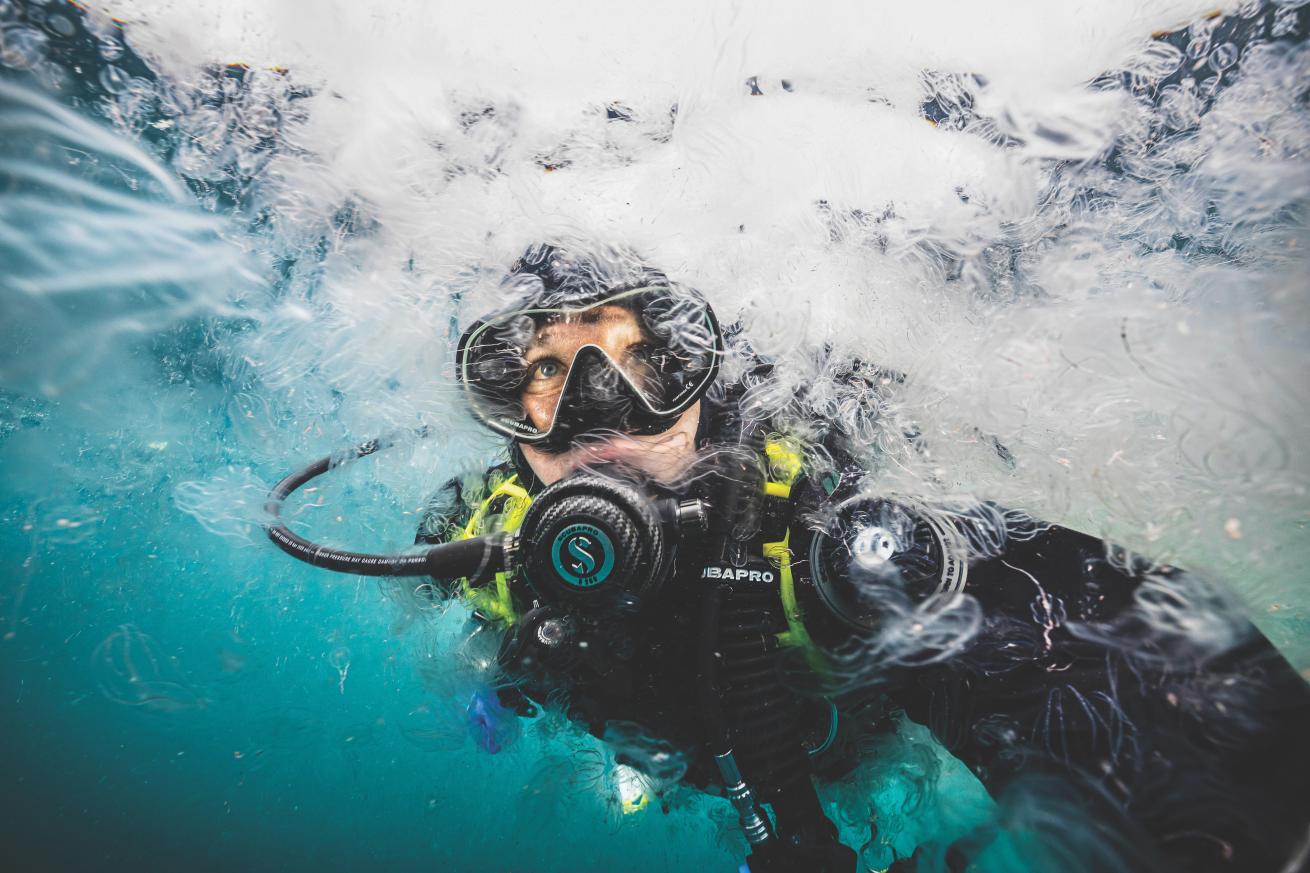Back in Action: Diving After An Injury

Brent DurandA fully healed Durand swims through a cloud of comb jellies near Sonoma County, California.
I spent almost three months out of the water, logging many hours sitting on the railings of the Venice pier with bare feet dangling over the breaking waves. I had been avoiding shoulder surgery for years, and once it was complete, I wanted to make a strong recovery without cheating any physical therapy deadlines or my doctor’s guidance. Days ticked away as I rode a bicycle trainer indoors, walked a lot, did my exercises and resisted the urge to wiggle into a wetsuit and BCD. My dedication to recovery paid off both on land and underwater. Today, my shoulder feels great, and I’m diving without worry.
Returning to the water after an injury, surgery or other medical condition can be intimidating. You may have settled into a new routine with less exercise and adventure, becoming complacent in a feedback loop that seems impossible to break. But humans have very strong minds. You can change your perspective to break free of the loop and establish new productive habits that will get you back in diving shape.
Consider the stories of these real-life inspirational figures in the dive community.
Laura Tesler, an avid shore diver, photographer and citizen scientist, underwent knee replacement surgery. She used her dive life as motivation to work through the recovery.
Related Reading: How to Plan Your Next Scuba Vacation—and How Not To
“I found it very helpful to work with a physical therapist who understood diving. We tailored my sessions with exercises that would help with dive activities like climbing a boat ladder or using the figure-four [method] for putting on fins,” explains Tesler.
In addition to pacing re-entry to diving with easy excursions to start, Tesler points out that you may want to consider telling your dive buddies about your condition so that plans and expectations are set appropriately. This helps keep everyone safe.
There are several approaches to easing back into diving. Local divers should opt for easy entries and solid buddies who are there to help. Traveling divers should check out local dive shop trips that offer suitable diving and guide support for their comfort level.
It’s also important to maintain a base level of diving fitness, especially if it supports your recovery from an injury.
I see the benefits of regular stretching and simple cross-training for diving. Our community is funny in that freedivers openly encourage stretching and even yoga, whereas you’ll rarely find a scuba diver mention these activities.
Related Reading: Does Your Dive Gear Matter?
If you keep physically prepared to dive, you’ll not only find more enjoyment and worry less about past injuries, but you’ll create gains while diving that permeate your life on land. This crossover is what Khalid Kareem, defensive end for the NFL’s Chicago Bears, advocates for. Kareem dives frequently and recently told PADI that he brings diving breathing techniques onto the field; they help him concentrate and be a better player. That’s just one way the skills you develop underwater can transition to benefit you beyond the sea.
Diving again after injury doesn’t have to be intimidating. Under the supervision of a doctor, you can start small with intentional recovery efforts and eventually build back toward your goals. Like a wheel of positive momentum, once you get it rolling, the rest is easy.










